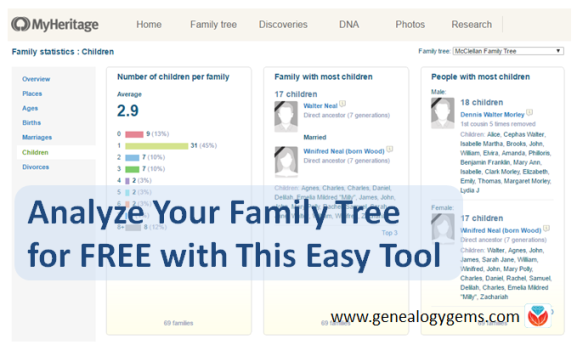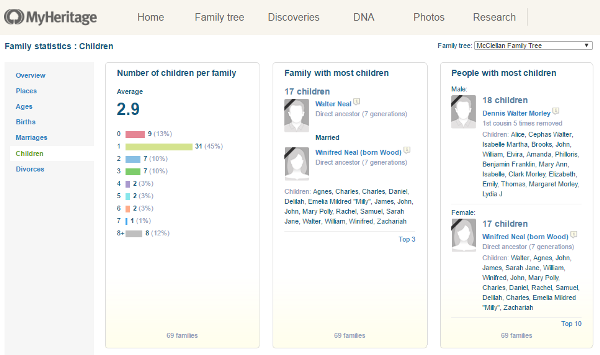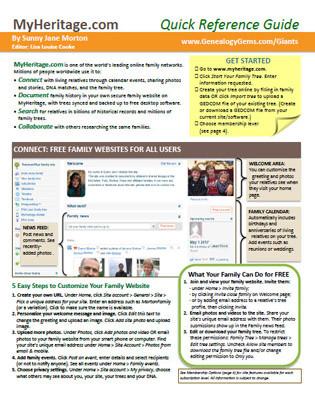by Lisa Cooke | Jan 8, 2016 | 01 What's New, Records & databases
 Every week, we dig through new genealogy records online and post the “gems” we find here. It’s a long list this week to catch up from our holiday break: which of these records may mention your ancestors?
Every week, we dig through new genealogy records online and post the “gems” we find here. It’s a long list this week to catch up from our holiday break: which of these records may mention your ancestors?
ALASKA VITAL RECORDS. A new FamilySearch collection includes indexed images of nearly 60,000 Alaskan birth, marriage, divorce and death records dating from 1816-1959.
AUSTRALIA CIVIL REGISTRATIONS. A new browse-only collection of Tasmanian civil registrations (1839-1938) is now online at FamilySearch.org. It includes district registers, counterfoils of marriage certificates and some church records.
BRITISH IN INDIA. Findmypast has published new record collections relating to British overseas travelers, workers and expatriates. The first includes “British people who either lived, worked or travelled in India from as early as 1664 up to 1961 with an index of births, marriages, divorces and deaths compiled by the Society of Genealogists.” There are also new collections from the India Office: births and baptisms and wills and probates.
DIGITAL BOOKS. A new FREE collection of 150,000 digitized books is searchable at MyHeritage.com. Among the titles are family, local and military histories; city and county directories; school and university yearbooks and church and congregational minutes.
ENGLAND PARISH AND ELECTORAL. Significantly-updated indexes of Kent parish registers and registers of electors (both dating to the 1500s!) are now online at FamilySearch, as Lancashire parish records to 1538 and another collection of parish registers back to 1603 that include Lancashire, Cheshire and Yorkshire.
MISSOURI MILITARY. FamilySearch has posted a new browse-only collection with more than 600,000 images of Pre-WWII Adjutant General Enlistment Records for 1900-1941.
SOUTH AFRICA CHURCH. A new collection of Netherdutch Reformed Church of Africa Records (1838-1991) from Pretoria, South Africa is now browsable at FamilySearch. Christening, marriage and membership records are among them.
WALES ELECTORAL REGISTERS. Over 1.6 million indexed names from electoral registers for Glamorgan and West Glamorgan, Wales (1839-1935) are now searchable at FamilySearch.org.
by Lisa Cooke | Dec 11, 2015 | 01 What's New, Records & databases
Our weekly roundup of new genealogy records online includes: the 1891 NSW Australia census;Portsmouth, England electoral registers; Frankfurt, Germany deaths; Massachusetts Revolutionary War soldiers; North Carolina probate and recent U.S. obituaries.
AUSTRALIA CENSUS. FamilySearch has added over 300k entries to its indexed records of the 1891 Australia Census for New South Wales.
ENGLAND ELECTORAL REGISTERS. Findmypast continues to expand its collection of electoral registers with nearly 200k transcripts from Portsmouth, England (1835-1873).
GERMANY DEATHS. Over half a million indexed records and accompanying images are at a new, free FamilySearch collection of death records for Frankfurt, Germany (1928-1978).
MASSACHUSETTS REVOLUTIONARY WAR. A new browsable collection of “index cards to muster rolls of soldiers who served in Massachusetts regiments during the Revolutionary War, 1775-1783″ is now searchable at FamilySearch. The card file comes from the Massachusetts State Archives in Boston.
NORTH CAROLINA PROBATE. More than a half million images and 25,000 indexed records have been added to a free collection of North Carolina estate records (1663-1979) at FamilySearch.
US OBITUARIES. FamilySearch has updated its collection of recent U.S. obituaries indexed from GenealogyBank newspaper images. Nearly 15 million records have been added. The index is free to search.
 Thank you for sharing these new genealogy records online with your fellow genealogy buddies and society members! You’re a gem!
Thank you for sharing these new genealogy records online with your fellow genealogy buddies and society members! You’re a gem!
by Diahan Southard | Mar 13, 2015 | 01 What's New, British, Canadian, Digital Archives, Records & databases
 We learn about so many fantastic new genealogy records online every week. So each Friday we round up several of them for you to glance through. Watch for databases and documents that your ancestors might appear in–but also watch for the kinds of records that may be out there already, that you haven’t yet looked for. This week: British women in World War I, Polish-American marriages, Irish vital records, Canadian travel photography, Scottish artifacts and documents and a Louisiana (US) press archive.
We learn about so many fantastic new genealogy records online every week. So each Friday we round up several of them for you to glance through. Watch for databases and documents that your ancestors might appear in–but also watch for the kinds of records that may be out there already, that you haven’t yet looked for. This week: British women in World War I, Polish-American marriages, Irish vital records, Canadian travel photography, Scottish artifacts and documents and a Louisiana (US) press archive.
WWI WOMEN. FindMyPast has posted over 9,500 UK records that illustrate the various roles played by woman during the Frist World War. These include:
POLISH-AMERICAN MARRIAGES. A new database of Polish-American marriages has been posted by the Polish Genealogical Society of Connecticut and the Northeast.
According to a press release, “This database contains the names of couples of Polish origin who were married in select locations in the Northeast United States. The information was taken from marriage records, newspaper marriage announcements, town reports, parish histories or information submitted by Society members. The time period generally covered by these lists is 1892-1940. It includes the States of Delaware, Massachusetts, New Hampshire, New Jersey, Rhode Island and Vermont. Connecticut and Jersey City, NJ will be added at a later date.”
IRISH BMD. Over a million records appear in a new database of Irish records of the city and county of Derry~Londonderry and Inishowen, County Donegal. Entries span 1642-1922 and include:
- Pre-1922 civil birth and marriage registers,
- Early baptismal and marriage registers of 97 churches,
- Headstone inscriptions from 118 graveyards, and
- Census returns and census substitutes from 1663 to 1901.
Click here to access these records (and other County Derry resources) at RootsIreland,ie (subscription required).
CANADIAN TRAVEL PHOTOGRAPHY. A small but visually rich collection of pictures promoting Canadian tourism is now at Flickr Creative Commons. Use these to explore places your ancestors may have visited (and the images that may have lured them there) if they vacationed by rail in the 1800s or early 1900s. (Click here to learn more about finding great historical photos at Flickr Creative Commons.)
SCOTTISH ARTIFACTS AND DOCUMENTS. A new digital archive at Historic Scotland has launched an online database of 400 artefacts now includes over 400 artifacts important to Scottish history. Everyday household objects, ship models, coins, weaponry, bits ‘n bobs of old homes and buildings, industrial machinery and miscellaneous photos, books and ephemera are all browsable on this site. It’s a great place to look for images that help illustrate your Scottish ancestors’ history.
LOUISIANA PRESS COVERAGE. The Louisiana Digital Media Archive has launched as “the first project in the nation to combine the media collections of a public broadcaster and a state archives,” according to its site description. “This ever-expanding site contains a combined catalog of thousands of hours of media recorded over the past half-century. You can see interviews with Louisiana civil rights pioneers, notable political figures, war heroes, artists and literary icons. You’ll have a front row seat to Louisiana history through video of historic events. You can also visit remote and endangered Louisiana places and cultures.”
 Not sure how to find record sets like these for YOUR family history? Here’s a tip! Set up a Google Alert. Say you want to know whenever new material on Polish-Americans in Detroit is found by Google’s ever-searching search engines. Click here to learn how to set up this search (or any other) Google Alert for genealogy.
Not sure how to find record sets like these for YOUR family history? Here’s a tip! Set up a Google Alert. Say you want to know whenever new material on Polish-Americans in Detroit is found by Google’s ever-searching search engines. Click here to learn how to set up this search (or any other) Google Alert for genealogy.
This tip comes to you courtesy of the book The Genealogist’s Google Toolbox, Second Edition by Lisa Louise Cooke–the fully-revised 2015 edition that’s packed with strategies that will dramatically improve your ability to find your family history online.
by Lisa Cooke | Oct 5, 2015 | 01 What's New, British, History, images, Libraries, Military, Records & databases
Recently I heard about a slew of WWII documents at The National Archives [U.K.], some newly available online. Look closely at the descriptions: they have holdings of records of non-British forces, too!

Battle of Britain air observer. Wikipedia Commons image. Click to view.
Recently The National Archives [UK] promoted some of the WWII documents in its vaults, in commemoration of the 75th anniversary of the Battle of Britain. Below are resources and collections they’ve highlighted.
The National Archives’ guide to researching WWII. This is an overview to researching British government and military records of WWII.
Guide to Royal Air Force Service Records. Use this overview to see what records are available at The National Archives, and learn about related records that have been digitized and indexed at Findmypast.
Royal Air Force combat reports. These are “official reports which pilots or air gunners filed after they had encountered enemy aircraft on operational flights,” says a description on the site. “The reports cover action seen by the squadrons, wings and groups serving with Fighter Command, Bomber Command, Coastal Command and the Fleet Air Arm. Now held at The National Archives in series AIR 50, they include Commonwealth, United States Army Air Force and Allied units based in the United Kingdom during the Second World War.”
Royal Air Force operations record books for squadrons. “Most of them date from the Second World War but there are some from the 1920s and 1930s and a few from the First World War,” says the site. “The ORBs, in series AIR 27, were created to provide a complete record of a unit from the time of its formation. Each book includes an accurate record of operations carried out by the unit. This online collection also includes some operations record books for dominion and Allied Air Force squadrons under British Command.” Part of the series is viewable online.
More Exciting WWII Resources from Genealogy Gems:
10 Maps for Family History at David Rumsey Map Collection
The Ghost Army of WWII Author Interview in the free Genealogy Gems podcast episode 182
The Bombing of London in WWII: Interactive Map of The Blitz
 I love it when people share! Thank you for passing this post along to others who will want to know about it.
I love it when people share! Thank you for passing this post along to others who will want to know about it.
by Lisa Cooke | Jun 21, 2017 | 01 What's New, Health History, MyHeritage
There’s an easy, free way to analyze your family tree for patterns! Discover your ancestors’ average life expectancy, most common first names, how long they stayed married, and more. Share the results at your next family reunion, or use them to understand your family health history just a little bit better. Here’s how.

Whether you’re a paying subscriber to MyHeritage or are signed up as a free user, you have access to a little-known but fascinating tool on the site: Family Statistics.
You’ll find this tool under the Home tab:

Use this tool to explore various statistics and patterns in your family history, and to spot the “record-holders” on your tree. You don’t have to enter any information. Just click the topic on the left that you want to view (overview, places, ages, births, marriages, children, divorce). Easy-to-read infographics and summary charts will appear:

The Family Statistics tool will tell you:
- the most common places of birth, death, and residence
- most common surnames and male/female first names
- average life expectancy for men and women
- longest-lived and shortest-lived ancestors
- oldest/youngest living relatives on tree
- most common birth month, and how many people were born in each month
- number of marriages, and the longest and shortest marriages
- age at first marriage and who was the youngest/oldest when they married
- the biggest age differences in a couple
- total number of divorces, as well as the average age (and oldest/youngest) age at divorce, and the longest marriage ending in divorce
- average number of children per family and people with the most children
- the youngest/oldest age when having a child
- the average and biggest/smallest age difference between oldest and youngest children
You can run these statistics for all your trees together or individually. Here are some of the different ways to use the data:
For your research: Watch for possible errors or omissions on your family tree. Do you really have a relative who lived to be 112 years old, or did someone neglect to enter a death date?
For fun: Watch for interesting things to share in a trivia game or quiz at your next family reunion. You might even consider creating a “Hall of Fame” for that great-grandfather who lived to be 103, or that great-aunt who had 14 children. (Remember, don’t embarrass anyone by sharing sensitive or confidential information about living relatives or the recently-deceased.)
For understanding: Do certain patterns tend to run in your family, such as having children at a younger or older age?
For family health history: Longevity–age at death–is a measure in Family Statistics that relates to your family health history. You can’t look at cause of death with this tool, but click here to read about a clever way to look at causes of death in your family.
 MyHeritage is known for the technology tools on its site, such as its new Collection Catalog, the Discoveries pages, its DNA matching (click here to upload your raw data for FREE!), automatic record matching in unindexed content such as books, and automatic name translation in the search function.
MyHeritage is known for the technology tools on its site, such as its new Collection Catalog, the Discoveries pages, its DNA matching (click here to upload your raw data for FREE!), automatic record matching in unindexed content such as books, and automatic name translation in the search function.
Get up to speed on what MyHeritage has to offer in our totally-affordable MyHeritage Quick Guide, newly updated for 2017! Also check out our brand new quick guide, Genealogy Giants: Comparing the 4 Major Websites Quick Guide, which compares MyHeritage to what you’ll find on Ancestry, FamilySearch and Findmypast. Each has fantastic features you’ll want to know about!

 Every week, we dig through new genealogy records online and post the “gems” we find here. It’s a long list this week to catch up from our holiday break: which of these records may mention your ancestors?
Every week, we dig through new genealogy records online and post the “gems” we find here. It’s a long list this week to catch up from our holiday break: which of these records may mention your ancestors?








